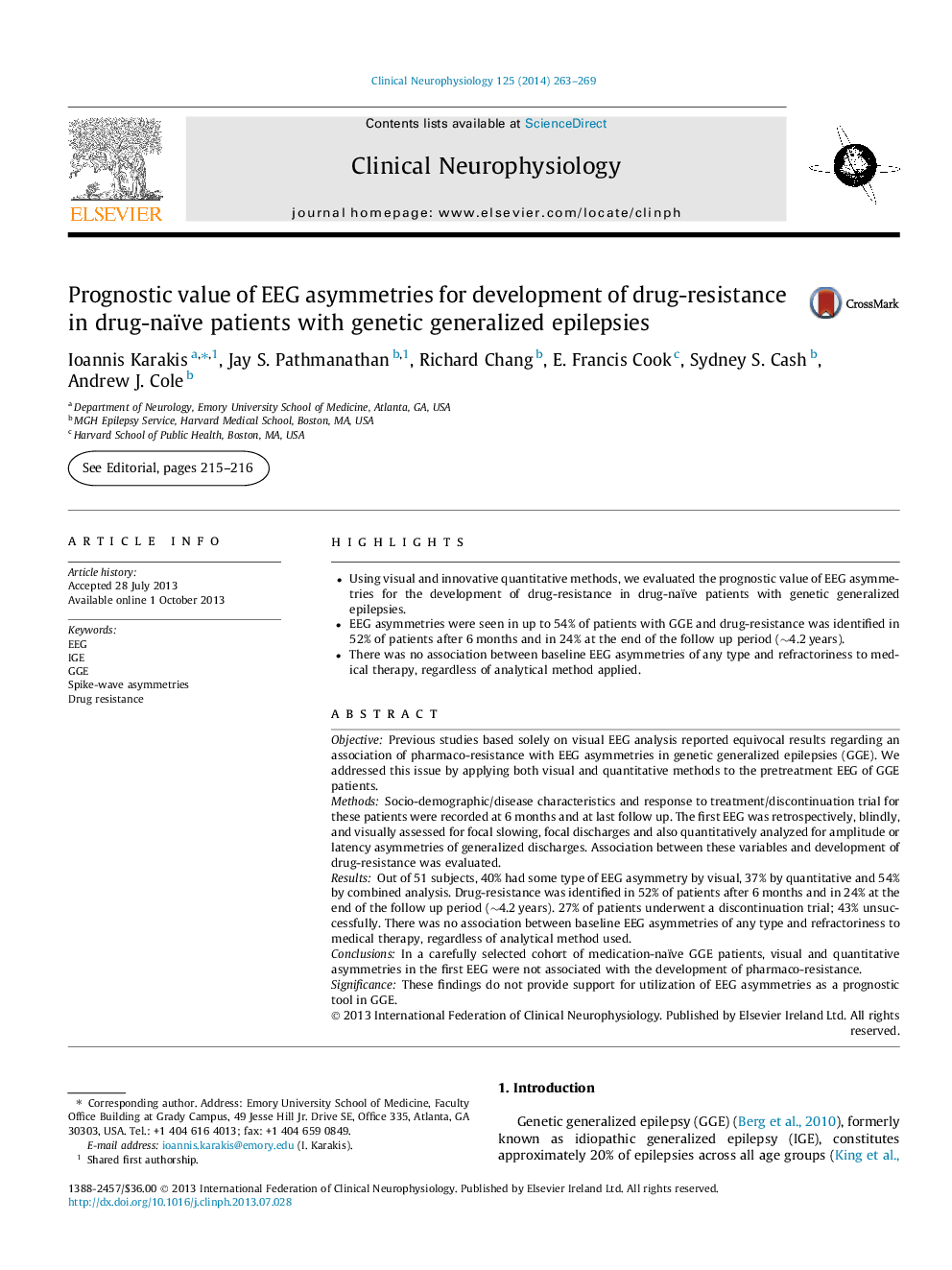| Article ID | Journal | Published Year | Pages | File Type |
|---|---|---|---|---|
| 3044394 | Clinical Neurophysiology | 2014 | 7 Pages |
•Using visual and innovative quantitative methods, we evaluated the prognostic value of EEG asymmetries for the development of drug-resistance in drug-naïve patients with genetic generalized epilepsies.•EEG asymmetries were seen in up to 54% of patients with GGE and drug-resistance was identified in 52% of patients after 6 months and in 24% at the end of the follow up period (∼4.2 years).•There was no association between baseline EEG asymmetries of any type and refractoriness to medical therapy, regardless of analytical method applied.
ObjectivePrevious studies based solely on visual EEG analysis reported equivocal results regarding an association of pharmaco-resistance with EEG asymmetries in genetic generalized epilepsies (GGE). We addressed this issue by applying both visual and quantitative methods to the pretreatment EEG of GGE patients.MethodsSocio-demographic/disease characteristics and response to treatment/discontinuation trial for these patients were recorded at 6 months and at last follow up. The first EEG was retrospectively, blindly, and visually assessed for focal slowing, focal discharges and also quantitatively analyzed for amplitude or latency asymmetries of generalized discharges. Association between these variables and development of drug-resistance was evaluated.ResultsOut of 51 subjects, 40% had some type of EEG asymmetry by visual, 37% by quantitative and 54% by combined analysis. Drug-resistance was identified in 52% of patients after 6 months and in 24% at the end of the follow up period (∼4.2 years). 27% of patients underwent a discontinuation trial; 43% unsuccessfully. There was no association between baseline EEG asymmetries of any type and refractoriness to medical therapy, regardless of analytical method used.ConclusionsIn a carefully selected cohort of medication-naïve GGE patients, visual and quantitative asymmetries in the first EEG were not associated with the development of pharmaco-resistance.SignificanceThese findings do not provide support for utilization of EEG asymmetries as a prognostic tool in GGE.
